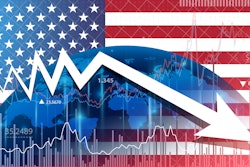
The global supply chain is facing critical hurdles in 2023, but they are not the same as past challenges. While the pandemic caused transportation logjams and drove up raw material costs in 2022, those problems have begun to ease over the last few months. As we enter 2023, the supply chain will experience new shipping, labor and logistics challenges, forcing retailers and manufacturers to pivot once again.
When COVID-19 closed international borders, shipments were held at ports throwing off retailers’ inventory as a result. Borders have since reopened, improving the flow of shipments, but transportation faces new challenges, one of the biggest being inflation. The skyrocketing cost of products has discouraged and reduced consumer demand, shifting buying behavior and further disrupting global shipments. At the height of COVID-19, demand far outweighed supply, but now consumers’ careful spending has forced retailers to reevaluate their inventory.
Additionally, ongoing labor shortages continue to impact an already struggling logistics sector. While the truck driver shortage improved slightly this year, the trucking industry is still seeing a dwindling workforce. The American Trucker Association reported a shortage of 78,000 drivers as the industry faces an aging labor force and increased freight demand. If that’s not enough, a narrowly avoided national rail strike further revealed the fragility of the transportation sector and the impact one problem can have on the entire supply chain; the strike was expected to cost $2 billion a day.
As myriad new challenges arise, the need for supply chain standardization is more critical than ever; the ability for retailers and manufacturers to communicate data clearly and effectively can be the difference between supply chain success and failure. Global standards and better communication among trading partners streamlines supply chains, enhancing operations and improving bottoms lines, plus it lends itself to a more sustainable supply chain and greener practices. Now in 2023, it is critical that brands and trading partners transition away from data silos, adopt industry standards, and invest in new technology to improve product traceability, information sharing, and interoperability to help withstand supply chain challenges.
In with global standards, out with obsolete data silos
Many brands are currently operating on antiquated legacy systems, which silos their data– a key visibility issue that trips up business operations by creating inconsistent data sets that prevent retailers from having an accurate view into their inventory. With product and freight prices at an all-time high, it is essential that retailers properly manage their inventory, which will improve ordering efficiency and allow them to navigate disruptions.
Data can naturally become compartmentalized due to different departments utilizing disparate data sets for their own priorities, creating misalignment throughout the organization. Companies who store their information in data silos are at an extreme disadvantage, as siloed data is typically incompatible across systems, thus severely restricting sharing capabilities with trading partners in addition to internal teams.
Companies are not adequately equipped to manage disruption without a solid handle on their data. This lack of visibility into the supply chain can lead to an inability to properly forecast orders, throwing off material production and shipping and creating a domino effect that further snarls the supply chain.
When data is digitized and can be universally shared at all levels of the company’s value chain, collaboration between users increases and retailers are better prepared for the next potential disruption.
Increasing visibility through a globally shared language
Exchanging data seamlessly requires all internal and external supply chain partners to speak the same language. Standards provide the common language that all businesses can understand, improving their data quality, digitization, and interoperability and allowing them insight and real-time views of products in their supply chains.
When products are assigned unique identifiers like a Global Trade Item Number (GTIN), it allows organizations to accurately track those products from the beginning to the end of their journey through the supply chain. This helps to keep inventory in check and ensures products are getting to the right place at the right time – a necessity when retailers are facing continued disruption with inventory, shipping and logistics but are also striving to operate more efficiently and sustainably.
Industry has been leveraging standards for years, and those who do have seen success in improving visibility and communication with trading partners. Some companies utilize standards like the GTIN to increase traceability and cut down on product loss. These companies have improved their ROI through effective inventory management and efficient, precise responses to product recalls. The ability to track products at every point in the supply chain provides companies with invaluable insight to shift direction when challenges disrupt their business.
Standards also help businesses dramatically reduce error rates in their orders and drive efficiency in their operations, allowing them time to focus on new innovations instead of constantly determining the best way to navigate the latest disruption.
Investing in technologies to improve supply chain resiliency
Global standards have the biggest impact on supply chain visibility when they’re leveraged through the right technologies. The UPC barcode with an embedded GTIN has been the go-to standards data carrier for millions of retailers worldwide, but innovative technologies like Radio Frequency Identification (RFID) and 2D barcodes (QR codes) are helping companies build a more resilient supply chain by improving the quantity and quality of information being shared between retailers and manufacturers.
The improved data quality stemming from QR codes and RFID technology helps enhance product transparency. QR codes are able to provide a more detailed description of an item, and the information linked from these codes can be updated in real time, supplying manufacturers and retailers with the most up to date information available to improve inventory accuracy and ordering.
RFID technology provides an even more in-depth view into a product’s location in the supply chain; with the scan of an RFID tag retailers can trace an individual product’s movement from the warehouse it originated from to the checkpoints it traveled through, all the way to its end location. According to Auburn University’s research, the use of RFID technology increases inventory accuracy up to 99%, enabling retailers to sell down to the last item. Knowing exactly what is in stock better prepares retailers for potential disruptions. This increased visibility also cuts down on product loss and automates warehouse operations, reducing the need for manual labor to help combat ongoing labor shortages.
Though supply chain challenges eased slightly post-COVID-19, the pandemic taught us to be prepared for the next disruption. In 2023, increased visibility is essential to building resiliency and sustainability; logistics and warehouse operations stand to be affected by shipping delays and continued labor shortages, creating operational issues and more environmental harm. Managing inventory is key to operational and ESG success; by leveraging standards with the right technologies, businesses will be able to withstand and prevail through future supply chain disruption.


















